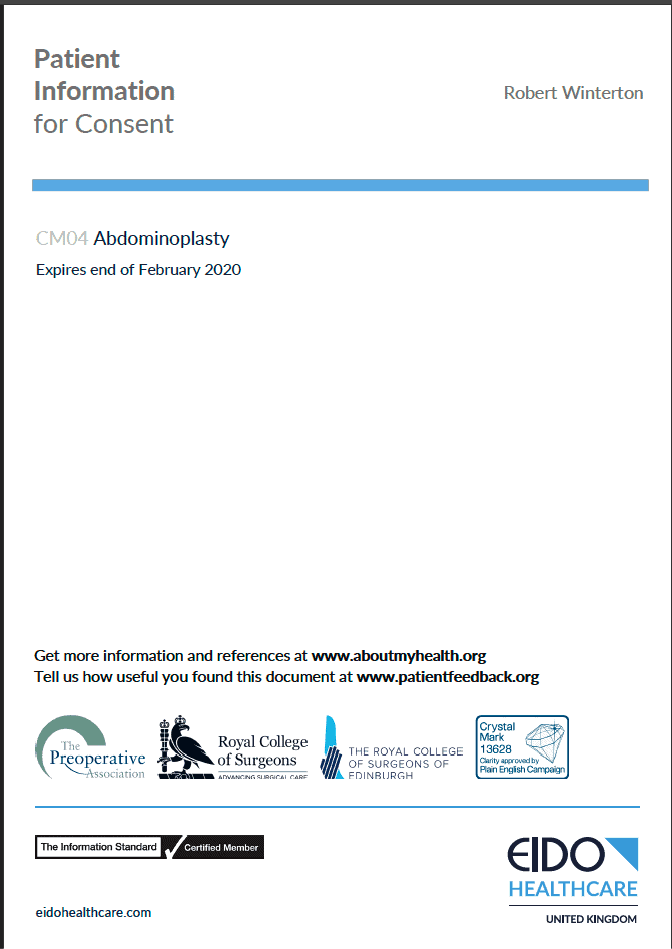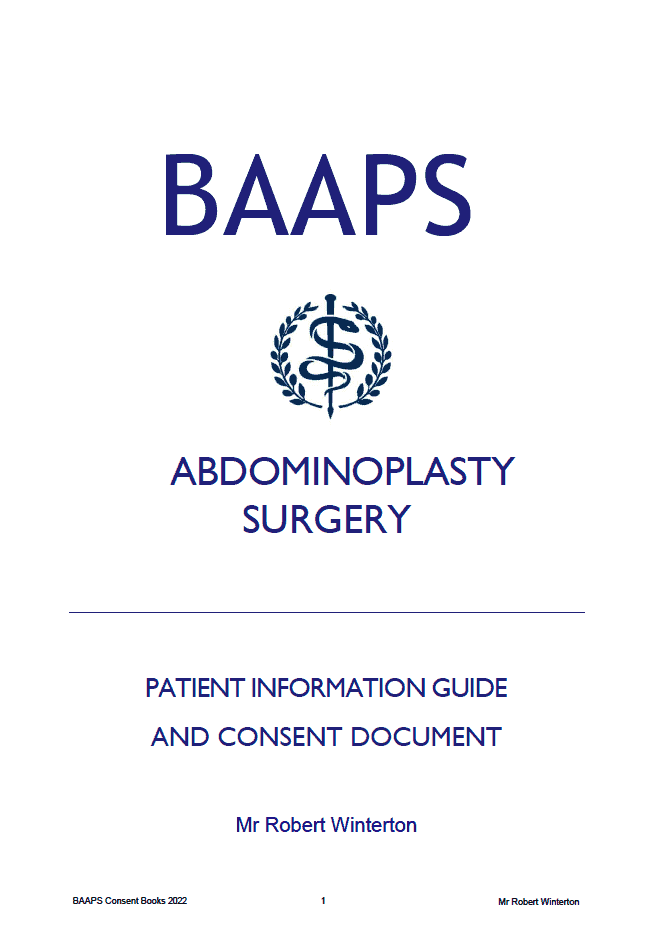Abdominoplasty surgery leaves extensive scarring that is permanent and of uncertain quality. Scars typically heal to leave faint, narrow lines, which are cosmetically very acceptable. A small percentage of patients will have problems with over-healing scars, which may require additional treatment.
Haematoma (blood collection in the wound) occurs in a small number of cases and typically occurs within the first 24 hours. The treatment is to evacuate the blood collection and stop any bleeding under general anaesthetic. This does not normally have any long term consequences.
Infections do not normally develop until several days after surgery or even into the second post-op week. Typical signs include redness, swelling, pain, fever, feeling unwell, and discharge of pus from the wound. Superficial infections may be treated with antibiotics alone, but neglected infections or those which are severe, sometimes additional surgery is required and the outcome may be adversely affected.
General complications may occur, including deep vein thrombosis and pulmonary embolism, (blood clots in the veins and the legs which may dislodge to the heart/lungs and may be life threatening). This risk is higher on women taking oral contraceptive pills or HRT, but this risk can be normalised by discontinuing the pill for six weeks prior to surgery or changing to dermal patches. Some patients choose to continue taking the oral contraceptive or HRT – blood thinning injections are given to mitigate the risk.
Seroma formation used to be relatively common, but since the introduction of quilting techniques, I have found that the incidence of seroma formation is now a relatively rare occurrence. Seroma formation for most patients is a nuisance, which is managed by drawing fluid off with a needle and syringe in clinic.
The shape of the new umbilicus (tummy button) may be different from the old one, but usually is very good. If stretch marks are present in the upper abdominal area, these will remain after surgery because it is not possible to remove the entire abdominal skin. Stretch marks or scars in the area above the tummy button will move downwards.
The skin of the lower tummy is typically quite numb after abdominoplasty surgery. Most patients recover the ability to feel pain and temperature, but sensation never returns to normal.
Occasionally, patients undergoing abdominoplasty will have some kind of adjustment or revision in the future. Typically, this will involve a minor procedure under local anaesthesia and most commonly is to smooth out the ends of the main scar across the low tummy. Surgery is carried out with the patient lying flat on the operating table, and no matter how perfect things look in that position, appearances sometimes change when standing.
 Book a Consultation
Book a Consultation






